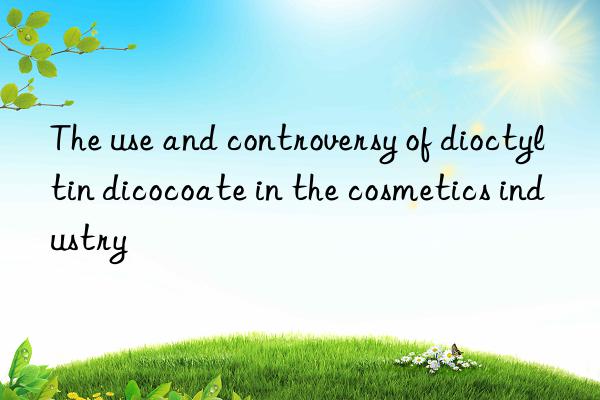
In the field of cosmetics and personal care products, although dioctyltin dicocoate (DOTE) is not used as a main ingredient, it is occasionally used as a specific Functional additives, especially when it comes to formulation stability and texture optimization. However, its application has been accompanied by a series of controversies, mainly surrounding safety, environmental impact and compliance.
Use a background
With its unique chemical structure, DOTE can play multiple roles in certain cosmetic formulations, including serving as a catalyst to assist chemical reactions, or improving product texture and extending shelf life through its specific physical and chemical properties. For example, in sunscreens and skin care lotions, it may be used to enhance the stability and water-repellent properties of the formulation, ensuring consistent quality throughout the product’s use by consumers.
Controversy
- Safety Controversy: Although DOTE is less toxic than some other organotin compounds, long-term exposure to organotin compounds may still pose potential risks to human health, including endocrine disruption and immune system Influence. The public and regulatory agencies are increasingly concerned about the potential harm to consumers from any ingredient used in cosmetics, especially given the direct contact with skin and frequent use of cosmetics.
- Environmental Impact: Like all organotin compounds, DOTE is difficult to degrade in nature and may accumulate in organisms, posing a threat to aquatic ecosystems. Environmental groups and scientists have called for reducing the use of such substances in consumer products to reduce the burden on the environment.
- Compliance Considerations: As regulations on cosmetic ingredients become increasingly stringent around the world, the use of DOTE is subject to strict legal restrictions. For example, the EU Cosmetics Regulation (EC) No 1223/2009 restricts or prohibits the use of certain organotin compounds in cosmetics. Although the specific provisions may not directly mention DOTE, the trend of strict supervision of the entire organotin substance has affected industry acceptance.
Industry Response and Alternatives
Facing the above-mentioned controversy, the cosmetics industry has taken a series of actions to respond. On the one hand, ingredient safety assessments have been strengthened, with many brands actively avoiding the use of DOTE or looking for safer alternatives. On the other hand, scientific researchers are committed to developing new materials with similar properties but higher environmental and biological safety, such as plant-based natural preservatives, synthetic ester stabilizers, etc.
Conclusion
Although the application of dioctyltin dicocoate in the cosmetics industry has demonstrated specific technical advantages, its potential health and environmental risks have prompted concerns both inside and outside the industry. Its usefulness has been re-evaluated. With the increasing awareness of sustainable development and consumer health, cosmetics manufacturers are actively adjusting formulas, reducing the use of controversial ingredients, and instead exploring and adopting safer and more environmentally friendly alternatives. In the future, with the advancement of science and technology and the improvement of regulatory policies, the selection of ingredients in the cosmetics industry will pay more attention to the dual harmony of ecology and human health.
Extended reading:
Dabco amine catalyst/Low density sponge catalyst
High efficiency amine catalyst/Dabco amine catalyst
Toyocat DT strong foaming catalyst pentamethyldiethylenetriamine Tosoh
DABCO 1027/foaming retarder – Amine Catalysts (newtopchem.com)
DBU – Amine Catalysts (newtopchem.com)

 微信扫一扫打赏
微信扫一扫打赏

